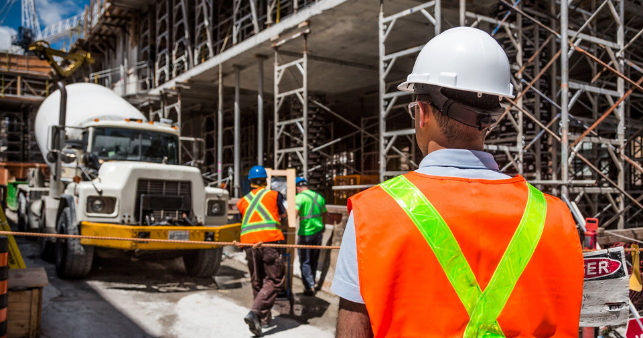
Onboarding a new employee within the construction industry is paramount. Particularly in Australia, where adherence to rigorous safety standards and compliance with legal regulations are fundamental. This guide offers insights into creating a detailed onboarding checklist designed specifically for the Australian building industry, ensuring a seamless integration of new hires into the workplace.
What is an onboarding process in construction?
An onboarding process in construction is a strategic roadmap for integrating new employees into your company. It encompasses a series of activities designed to equip them with the knowledge, skills, and resources needed to perform their jobs effectively and safely while delivering strong employee awareness of expectations. This process typically starts before the first day of employment and extends for several weeks, even months, depending on the complexity of the role.
Why is onboarding important in construction?
The construction industry faces unique challenges, including high-risk work environments and a constant need for skilled labour. A well-structured onboarding process offers significant advantages for both employers and employees:
Benefits for employers:
Improved safety performance: Thorough safety training, including proper use of personal protective equipment (PPE) and clear communication of safety protocols, to reduce workplace accidents and injuries.
Increased productivity: New hires who are properly trained and integrated into the team become productive members faster, minimising project delays.
Reduced turnover: A positive onboarding experience enhances employee engagement and satisfaction, leading to lower turnover rates and a more stable workforce.
Enhanced employer branding: A strong onboarding process demonstrates a company's commitment to its employees, attracting and retaining top talent in a competitive market.
Benefits for employees:
Increased confidence and competence: New hires feel more confident and prepared to perform their jobs effectively when they receive proper training and support.
Improved safety awareness: A comprehensive safety induction empowers new hires to identify and avoid workplace hazards, protecting themselves and their co-workers.
Stronger company culture: A positive onboarding experience helps new hires feel welcome and valued, leading to a better sense of belonging and a more positive work environment.
Clearer career path: Understanding company expectations and growth opportunities allows new hires to set goals and plan their career development within the organisation.
Australian construction industry onboarding checklist
A well-structured new hire checklist template ensures safety compliance, adherence to your company's policies and a productive work environment.
This onboarding checklist provides a roadmap for Australian construction businesses to streamline the onboarding process and set new hires up for success.
1. Enhanced pre-onboarding
Even before a new employee's first day on a job site, there are steps you can take to ensure a smooth transition.
Offer letter and employment contract: Clearly outline the position details, including salary, benefits, probation period (if applicable) and termination clauses.
Right to work verification: Ensure your new hire has the legal right to work in Australia. You can use the ID Match, the Document Verification Service (DVS) provided by the Department of Home Affairs.
Pre-employment checks: Conduct reference checks and verify qualifications as per your company policy.
Safety training enrolment: Enrol new hires in mandatory construction safety courses recognised by Safe Work Australia, like the Construction White Card or Working at Heights training, depending on the role. Consider additional training specific to your company's needs.
Digital onboarding portal: Implement a digital portal for efficient completion and tracking of legal, health and safety documentation in line with Australian legal requirements.
2. Detailed first-day orientation
The first day for a new hire sets the tone. Make it informative, engaging, and welcoming.
Welcome and introductions: Greet the new hire warmly and introduce them to key personnel, including supervisors, team members and HR representatives.
Company overview: Provide a company history, core values, and an overview of the different departments and projects.
Administrative tasks: Complete essential paperwork like tax forms, superannuation selection and emergency contact information.
Benefits and company policies: Explain company benefits like paid leave and any relevant policies such as dress code, social media usage and grievance procedures. These should all be in your employee handbook.
IT setup: If required. provide the new hire with a company laptop, login credentials and an overview of communication tools used within the team.
3. Safety induction
Safety is paramount in construction. A thorough safety induction is crucial to cultivate strong employee awareness of site-specific hazards, emergency procedures and proper use of Personal Protective Equipment (PPE).
Interactive site safety tour: Utilise technology such as virtual reality for an immersive safety induction experience, showcasing Australian construction site protocols.
Site safety tour: Conduct a comprehensive tour of the current worksite, highlighting potential hazards, safety rules and emergency evacuation procedures, and location of the emergency assembly point.
Personal Protective Equipment (PPE) workshop: Provide training on the proper use, maintenance, and inspection of required PPE like safety glasses, hard hats, respirators, and high-visibility clothing as per Australian Safety Standards.
Site-specific safety requirements: Provide a comprehensive overview of ongoing projects, highlighting specific hazards and controls, including risks related to electrical elements, working at height and machinery operation as per the Australian Work Health and Safety Act 2011.
Emergency procedures: Train the new hire on emergency response protocols, including fire drills, evacuation routes and first aid procedures.
Safety culture: Emphasise the importance of safety as a core value. Encourage new hires to report any unsafe work practices or potential hazards.
4. Role-specific training and mentorship
Employee's responsibilities are further clarified through role-specific training and mentorship. This ensures they understand their duties and how they contribute to the overall project goals.
Job shadowing: Pair the new hire with an experienced team member for on-the-job training and familiarisation with daily tasks.
Customised equipment training modules: Offer training sessions tailored to the machinery or tasks common in Australian construction projects.
Mentorship program enhancement: Develop a structured mentorship program that aligns with Australian industry standards, including regular milestones and feedback sessions.
Performance reviews: Schedule regular performance reviews to provide feedback, assess employee's responsibilities address any challenges and identify areas for improvement.
5. Documentation, compliance, and verification
Maintaining accurate records and ensuring compliance with Australian regulations is crucial.
Signed documents: Obtain the new hire's signature on all completed onboarding documents, including safety protocols, company policies and benefit acknowledgements.
Training records: Maintain a record of all completed safety training courses and any role-specific training provided to the new hire.
Certification verification system: Establish a system to continuously verify and update contact details with professional licenses and certifications, crucial for Australian construction standards.
6. Continuous support and engagement
A successful onboarding process goes beyond the first few days or weeks.
Continuous safety culture reinforcement: Integrate safety as a core topic in all team meetings and communications, reinforcing the Australian construction industry's commitment to a zero-harm workplace.
360-degree feedback mechanism: Set up a comprehensive feedback system that encourages open dialogue and continuous improvement.
Social events: Organise social events or team-building activities to help new hires integrate with the team and foster a positive work environment.
Regular communication: Maintain open communication channels with the new hire. Encourage them to ask questions, seek clarification and provide feedback.
Career pathway planning: Outline clear pathways for career advancement within the company, including leadership or specialist training opportunities prevalent within the Australian context.
Contractor onboarding in the Australian construction industry
Onboarding contractors into your construction projects require a separate yet equally important onboarding process. Here's a breakdown of the key considerations for an effective contractor onboarding checklist in Australia:
Prequalification: Establish a prequalification process to assess a contractor's experience, qualifications, safety record, insurance coverage and financial stability before awarding a contract.
Contract review and signing: Ensure a clear and concise contract outlines project details, scope of work, timelines, payment terms, safety protocols and termination clauses.
Safety induction: All contractors and subcontractors must undergo a site-specific safety induction tailored to the project's specific hazards and risks.
Insurance verification: Verify that the contractor holds the necessary insurance coverage for public liability, workers' compensation and any other relevant coverages as stipulated in the contract.
Communication and collaboration: Establish clear communication channels with the contractor and ensure they are integrated into project planning meetings and progress updates.
Performance management: Develop a system for monitoring the contractor's performance against agreed-upon timelines, quality standards and safety protocols.
Onboarding in Australia: Tools and Resources
Here are some valuable resources to streamline your construction onboarding process in Australia:
Safe Work Australia: Provides a wealth of information on construction safety, including resources for training and developing a safety culture.
Master Builders Association (MBA): Offers resources and support for construction businesses, including guidance on workplace relations and onboarding best practices.
National Construction Code (NCC): Sets the minimum standards for building work in Australia. Familiarise yourself with the NCC to ensure your onboarding process incorporates relevant safety regulations.
Additional tips for a successful construction onboarding
Personalise the experience: Tailor the onboarding process to the new hire's experience level and specific role.
Gather feedback: Solicit feedback from new hires throughout the onboarding process to identify areas for improvement.
Celebrate achievements: Recognise and celebrate the new hire's achievements and milestones to boost morale and engagement.
Invest in technology: Utilise online tools and platforms to streamline paperwork, manage training records, and facilitate communication.
Continuous improvement: Regularly review and update your onboarding process to ensure it remains effective and meets the evolving needs of your business.
Empowering construction teams with Employsure
Employsure is dedicated to bolstering Australia’s construction industry with strategic onboarding solutions. Our in-depth knowledge of Australian safety, compliance and HR practices can assist you in crafting an onboarding experience designed to help you meet stringent legal requirements and also nurture a robust safety culture and team unity.
Contact Employsure for a consultation, and let’s construct a secure and efficient onboarding journey together.
Frequently Asked Questions
How long should the construction onboarding process last?
There's no one-size-fits-all solution. The duration can vary depending on the complexity of the role, required training, and company size. However, a well-structured onboarding process should ideally last for at least a few weeks, with ongoing support and mentorship provided for several months.
What are the benefits of a strong construction onboarding process?
A well-designed onboarding process offers numerous benefits, including:
- Improved safety compliance and reduced workplace accidents.
- Increased employee engagement and job satisfaction.
- Reduced time-to-productivity for new hires.
- Lower employee turnover rates.
- Enhanced company culture and employer branding.
What are some common challenges faced during construction onboarding?
Some common challenges include:
- Lack of a standardised onboarding process.
- Inadequate training resources.
- Inefficient paperwork and documentation procedures.
- Poor communication between HR and hiring managers.
- Limited mentorship and support for new hires.
What is the Australian Construction White Card?
The White Card is a mandatory construction induction training course required for all construction workers in Australia. You can find Registered Training Organisations (RTOs) offering White Card training courses through the websites of Safe Work Australia or the Master Builders Association.


